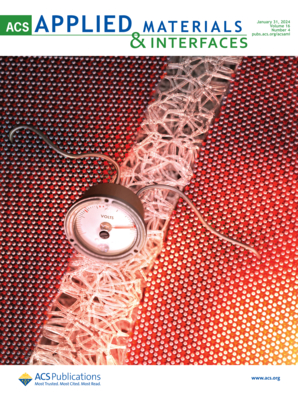Metal Ion-Condensed DNA Nanoparticle Library: Phase Separation and Transition and Antisense Therapy Applications
IF 8.3
2区 材料科学
Q1 MATERIALS SCIENCE, MULTIDISCIPLINARY
引用次数: 0
Abstract
DNA condensation has long been investigated as a fundamental cellular activity and is known to be driven by the mediation of diverse condensing agents. The phase behaviors of DNA during condensation are particularly interesting because the complicated molecular structure of natural nucleotides fundamentally allows electrostatic, coordinate covalent, and various other secondary interactions with the condensing agents. Recently, metal ion (Mn+)-induced DNA condensation has emerged as a powerful approach to synthesizing nanoparticulate DNA structures suitable for therapeutic gene delivery. However, how the DNA phase changes during Mn+-induced DNA condensation has rarely been observed and is not understood yet. In this study, a library of Mn+-condensed DNA nanoparticles (Mn+-CDNPs) was established using 30 different types of Mn+s, and their phase behaviors during condensation were elucidated using spherical nucleic acids (SNAs) as electron microscopic labels. Importantly, the phase transition and separation of DNA were demonstrated to be driven by the Mn+s into either the growth of individual DNA particles or the fission of bulky DNA aggregates. Pt2+ and Eu3+ were chosen as model systems for the demonstration. The hard and soft acid nature of Mn+ is presumably the underlying driving force of these phase transitions. In addition, the Mn+-controlled anticancer therapeutic efficiency of the Mn+-CDNP library as a state-of-the-art gene delivery platform was demonstrated even for unmodified antisense oligonucleotides in association with the potential toxicity of the Mn+s released from the Mn+-CDNPs. This comprehensive study of the Mn+-dependent condensation of nucleic acids provides profound insights into the chemistry of the nucleic acid–Mn+ interactions and the reliable theragnostic applications of Mn+-CDNPs as functional nucleic acid nanostructures.

金属离子凝聚 DNA 纳米粒子库:相分离和转换以及反义治疗应用
DNA 缩合作为一种基本的细胞活动长期以来一直受到研究,而且众所周知,DNA 缩合是由多种缩合剂介导驱动的。DNA 在缩合过程中的相行为特别有趣,因为天然核苷酸的复杂分子结构从根本上允许与缩合剂发生静电、配位共价和其他各种次级相互作用。最近,金属离子(Mn+)诱导的 DNA 缩合已成为合成适用于治疗性基因递送的纳米颗粒 DNA 结构的有力方法。然而,人们很少观察到 Mn+ 诱导的 DNA 缩合过程中 DNA 相是如何变化的,对这一点也还不了解。本研究利用 30 种不同类型的 Mn+s 建立了 Mn+ 缩合 DNA 纳米颗粒(Mn+-CDNPs)库,并以球形核酸(SNAs)作为电子显微镜标记阐明了它们在缩合过程中的相态行为。重要的是,DNA 的相变和分离被证明是由 Mn+s 驱动的,要么是单个 DNA 粒子的增长,要么是体积庞大的 DNA 聚集体的裂变。演示选择了 Pt2+ 和 Eu3+ 作为模型系统。据推测,Mn+的软硬酸性是这些相变的基本驱动力。此外,即使对于未经修饰的反义寡核苷酸,Mn+-CDNP 库作为最先进的基因递送平台,其 Mn+ 控制的抗癌治疗效率也得到了证实,这与 Mn+-CDNPs 释放的 Mn+s 的潜在毒性有关。这项关于核酸的 Mn+ 依赖性缩合的综合研究为核酸与 Mn+ 的化学相互作用以及 Mn+-CDNPs 作为功能性核酸纳米结构的可靠热敏应用提供了深刻的见解。
本文章由计算机程序翻译,如有差异,请以英文原文为准。
求助全文
约1分钟内获得全文
求助全文
来源期刊

ACS Applied Materials & Interfaces
工程技术-材料科学:综合
CiteScore
16.00
自引率
6.30%
发文量
4978
审稿时长
1.8 months
期刊介绍:
ACS Applied Materials & Interfaces is a leading interdisciplinary journal that brings together chemists, engineers, physicists, and biologists to explore the development and utilization of newly-discovered materials and interfacial processes for specific applications. Our journal has experienced remarkable growth since its establishment in 2009, both in terms of the number of articles published and the impact of the research showcased. We are proud to foster a truly global community, with the majority of published articles originating from outside the United States, reflecting the rapid growth of applied research worldwide.
 求助内容:
求助内容: 应助结果提醒方式:
应助结果提醒方式:


